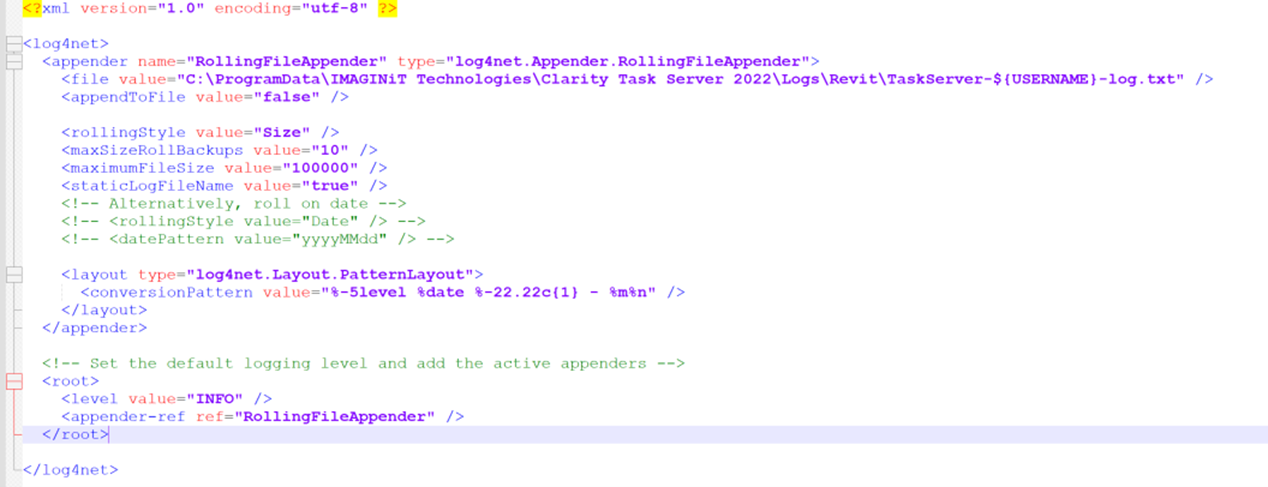How to Increase the Size of the Logs on the Task Server
Issue:
The log files are rolling over too fast to help with troubleshooting. When we request diagnostics for a task that ran into an issue, these logs, along with the journal if it is a Revit task are what we use to determine what happened. If they are out of date, we can't see what happened. Changing the configuration to larger files and/or more will cover a larger time span.
Solution:
Increase the file size and/or the number of logs.
There are three different types of logs, they record different information based on the type of task. The log configuration file locations are shown below.

- TaskServer (These are in each version of Revit)
- C:\Program Files\IMAGINiT Technologies\Clarity Task Server for Revit\20##\Log4Net.config
- TaskTray
- C:\Program Files\IMAGINiT Technologies\Clarity Task Server for Revit\Log4Net.config
- WindowsTaskService
- C:\Program Files\IMAGINiT Technologies\Clarity Task Server for Revit\Clarity Task Server for Windows\Log4Net.config
Task Server Log
These logs keep track of the Revit tasks running. Since there are different versions of Revit on the task server, you will modify this configuration in several locations.
These logs offer a condensed view of the task process. For the full details you would look at the Revit journal used in the task. They also tell us the following:
- What versions of Revit we can process tasks on
- What drives are available and how much space they have
- What identity is running the task
- What tasks are in the que and are available for this task server
Task Tray Logs
The task tray log keeps track of several things, for example:
- Token expiration dates for 360
- Polling for tasks
- Keeping track of memory consumption
- Determining if an alert should be sent
Windows Task Service Logs
These logs keep track of the Windows tasks. The credentials used to process the task are the ones assigned to the service rather than the logged in user. Additionally this task processor uses the host BIM 360 Oauth credentials rather than the ones logged in through the desktop connector.
Changing the Configuration
There’s lots of ways to define how they name, capture and rollover.

The highlighted values above are the easiest to change. You can increase the number of logs from 10 to something higher, or you can change the file size by adding another 0 to the end and save the file.
If you get an error saving the file, save it to the desktop, then move it into the folder and overwrite.
Make sure it is still seen as a configuration file or it will not work.

Log4net.config screen shot

There are a variety of other configuration options, described here:
https://logging.apache.org/log4net/release/config-examples.html#fileappender